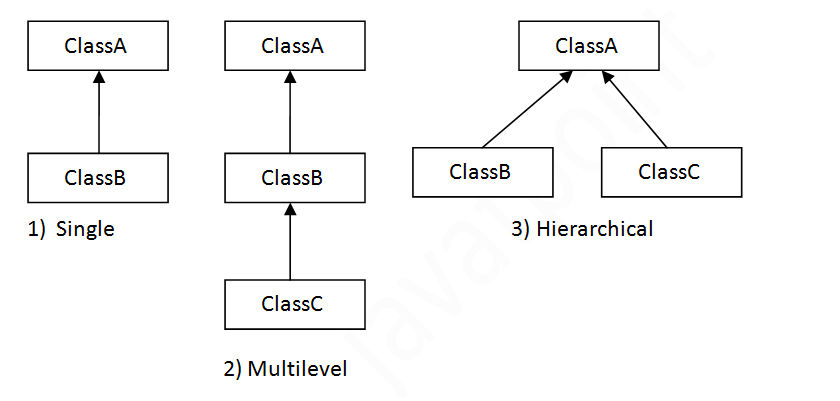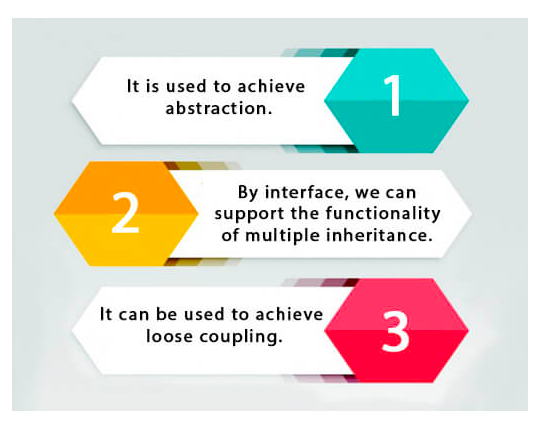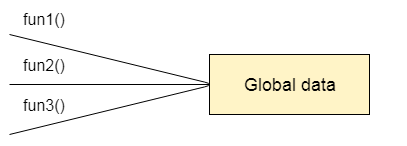15 posts
We have several ways to connect to an API.
Those are:
In the old days, this Apache HTTPClient is the de facto standard to send an HTTP GET/POST request in Java.
// pom.xml :
<dependency>
<groupId>org.apache.httpcomponents</groupId>
<artifactId>httpclient</artifactId>
<version>4.5.10</version>
</dependency>
// HttpClientExample.java :
package com.httpclient;
import org.apache.http.Header;
import org.apache.http.HttpEntity;
import org.apache.http.HttpHeaders;
import org.apache.http.NameValuePair;
import org.apache.http.client.entity.UrlEncodedFormEntity;
import org.apache.http.client.methods.CloseableHttpResponse;
import org.apache.http.client.methods.HttpGet;
import org.apache.http.client.methods.HttpPost;
import org.apache.http.impl.client.CloseableHttpClient;
import org.apache.http.impl.client.HttpClients;
import org.apache.http.message.BasicNameValuePair;
import org.apache.http.util.EntityUtils;
import java.io.IOException;
import java.util.ArrayList;
import java.util.List;
public class HttpClientExample {
// one instance, will reuse it
private final CloseableHttpClient httpClient = HttpClients.createDefault();
public static void main(String[] args) throws Exception {
HttpClientExample obj = new HttpClientExample();
try {
System.out.println("Testing 1 - Send Http GET request");
obj.sendGet();
System.out.println("Testing 2 - Send Http POST request");
obj.sendPost();
} finally {
obj.close();
}
}
private void close() throws IOException {
httpClient.close();
}
private void sendGet() throws Exception {
HttpGet request = new HttpGet("https://www.google.com/search?q=mkyong");
// add request headers
request.addHeader("custom-key", "mkyong");
request.addHeader(HttpHeaders.USER_AGENT, "Googlebot");
try (CloseableHttpResponse response = httpClient.execute(request)) {
// Get HttpResponse Status
System.out.println(response.getStatusLine().toString());
HttpEntity entity = response.getEntity();
Header headers = entity.getContentType();
System.out.println(headers);
if (entity != null) {
// return it as a String
String result = EntityUtils.toString(entity);
System.out.println(result);
}
}
}
private void sendPost() throws Exception {
HttpPost post = new HttpPost("https://httpbin.org/post");
// add request parameter, form parameters
List<NameValuePair> urlParameters = new ArrayList<>();
urlParameters.add(new BasicNameValuePair("username", "abc"));
urlParameters.add(new BasicNameValuePair("password", "123"));
urlParameters.add(new BasicNameValuePair("custom", "secret"));
post.setEntity(new UrlEncodedFormEntity(urlParameters));
try (CloseableHttpClient httpClient = HttpClients.createDefault();
CloseableHttpResponse response = httpClient.execute(post)) {
System.out.println(EntityUtils.toString(response.getEntity()));
}
}
}
This OkHttp is very popular on Android, and widely used in many web projects.
// pom.xml
<dependency>
<groupId>com.squareup.okhttp3</groupId>
<artifactId>okhttp</artifactId>
<version>4.2.2</version>
</dependency>
// OkHttpExample.java
package com.okhttp;
import okhttp3.*;
import java.io.IOException;
public class OkHttpExample {
// one instance, reuse
private final OkHttpClient httpClient = new OkHttpClient();
public static void main(String[] args) throws Exception {
OkHttpExample obj = new OkHttpExample();
System.out.println("Testing 1 - Send Http GET request");
obj.sendGet();
System.out.println("Testing 2 - Send Http POST request");
obj.sendPost();
}
private void sendGet() throws Exception {
Request request = new Request.Builder()
.url("https://www.google.com/search?q=mkyong")
.addHeader("custom-key", "mkyong") // add request headers
.addHeader("User-Agent", "OkHttp Bot")
.build();
try (Response response = httpClient.newCall(request).execute()) {
if (!response.isSuccessful()) throw new IOException("Unexpected code " + response);
// Get response body
System.out.println(response.body().string());
}
}
private void sendPost() throws Exception {
// form parameters
RequestBody formBody = new FormBody.Builder()
.add("username", "abc")
.add("password", "123")
.add("custom", "secret")
.build();
Request request = new Request.Builder()
.url("https://httpbin.org/post")
.addHeader("User-Agent", "OkHttp Bot")
.post(formBody)
.build();
try (Response response = httpClient.newCall(request).execute()) {
if (!response.isSuccessful()) throw new IOException("Unexpected code " + response);
// Get response body
System.out.println(response.body().string());
}
}
}
In Java 11, a new HttpClient is introduced in package java.net.http.*
// Java11HttpClientExample.java :
package com.java11http;
import java.net.URI;
import java.net.URLEncoder;
import java.net.http.HttpClient;
import java.net.http.HttpRequest;
import java.net.http.HttpResponse;
import java.nio.charset.StandardCharsets;
import java.util.HashMap;
import java.util.Map;
public class Java11HttpClientExample {
// one instance, reuse
private final HttpClient httpClient = HttpClient.newBuilder()
.version(HttpClient.Version.HTTP_2)
.build();
public static void main(String[] args) throws Exception {
Java11HttpClientExample obj = new Java11HttpClientExample();
System.out.println("Testing 1 - Send Http GET request");
obj.sendGet();
System.out.println("Testing 2 - Send Http POST request");
obj.sendPost();
}
private void sendGet() throws Exception {
HttpRequest request = HttpRequest.newBuilder()
.GET()
.uri(URI.create("https://httpbin.org/get"))
.setHeader("User-Agent", "Java 11 HttpClient Bot")
.build();
HttpResponse<String> response = httpClient.send(request, HttpResponse.BodyHandlers.ofString());
// print status code
System.out.println(response.statusCode());
// print response body
System.out.println(response.body());
}
private void sendPost() throws Exception {
// form parameters
Map<Object, Object> data = new HashMap<>();
data.put("username", "abc");
data.put("password", "123");
data.put("custom", "secret");
data.put("ts", System.currentTimeMillis());
HttpRequest request = HttpRequest.newBuilder()
.POST(buildFormDataFromMap(data))
.uri(URI.create("https://httpbin.org/post"))
.setHeader("User-Agent", "Java 11 HttpClient Bot") // add request header
.header("Content-Type", "application/x-www-form-urlencoded")
.build();
HttpResponse<String> response = httpClient.send(request, HttpResponse.BodyHandlers.ofString());
// print status code
System.out.println(response.statusCode());
// print response body
System.out.println(response.body());
}
private static HttpRequest.BodyPublisher buildFormDataFromMap(Map<Object, Object> data) {
var builder = new StringBuilder();
for (Map.Entry<Object, Object> entry : data.entrySet()) {
if (builder.length() > 0) {
builder.append("&");
}
builder.append(URLEncoder.encode(entry.getKey().toString(), StandardCharsets.UTF_8));
builder.append("=");
builder.append(URLEncoder.encode(entry.getValue().toString(), StandardCharsets.UTF_8));
}
System.out.println(builder.toString());
return HttpRequest.BodyPublishers.ofString(builder.toString());
}
}
This HttpURLConnection class is available since Java 1.1.Generally, it’s NOT recommend to use this class, because the codebase is very old and outdated, it may not supports the new HTTP/2 standard, in fact, it’s really difficult to configure and use this class.
// HttpURLConnectionExample.java :
package com.mkyong.httpurl;
import javax.net.ssl.HttpsURLConnection;
import java.io.BufferedReader;
import java.io.DataOutputStream;
import java.io.InputStreamReader;
import java.net.HttpURLConnection;
import java.net.URL;
public class HttpURLConnectionExample {
public static void main(String[] args) throws Exception {
HttpURLConnectionExample obj = new HttpURLConnectionExample();
System.out.println("Testing 1 - Send Http GET request");
obj.sendGet();
System.out.println("Testing 2 - Send Http POST request");
obj.sendPost();
}
private void sendGet() throws Exception {
String url = "https://www.google.com/search?q=mkyong";
HttpURLConnection httpClient =
(HttpURLConnection) new URL(url).openConnection();
// optional default is GET
httpClient.setRequestMethod("GET");
//add request header
httpClient.setRequestProperty("User-Agent", "Mozilla/5.0");
int responseCode = httpClient.getResponseCode();
System.out.println("\nSending 'GET' request to URL : " + url);
System.out.println("Response Code : " + responseCode);
try (BufferedReader in = new BufferedReader(
new InputStreamReader(httpClient.getInputStream()))) {
StringBuilder response = new StringBuilder();
String line;
while ((line = in.readLine()) != null) {
response.append(line);
}
//print result
System.out.println(response.toString());
}
}
private void sendPost() throws Exception {
// url is missing?
//String url = "https://selfsolve.apple.com/wcResults.do";
String url = "https://httpbin.org/post";
HttpsURLConnection httpClient = (HttpsURLConnection) new URL(url).openConnection();
//add reuqest header
httpClient.setRequestMethod("POST");
httpClient.setRequestProperty("User-Agent", "Mozilla/5.0");
httpClient.setRequestProperty("Accept-Language", "en-US,en;q=0.5");
String urlParameters = "sn=C02G8416DRJM&cn=&locale=&caller=&num=12345";
// Send post request
httpClient.setDoOutput(true);
try (DataOutputStream wr = new DataOutputStream(httpClient.getOutputStream())) {
wr.writeBytes(urlParameters);
wr.flush();
}
int responseCode = httpClient.getResponseCode();
System.out.println("\nSending 'POST' request to URL : " + url);
System.out.println("Post parameters : " + urlParameters);
System.out.println("Response Code : " + responseCode);
try (BufferedReader in = new BufferedReader(
new InputStreamReader(httpClient.getInputStream()))) {
String line;
StringBuilder response = new StringBuilder();
while ((line = in.readLine()) != null) {
response.append(line);
}
//print result
System.out.println(response.toString());
}
}
}
Please log in to leave a comment.



